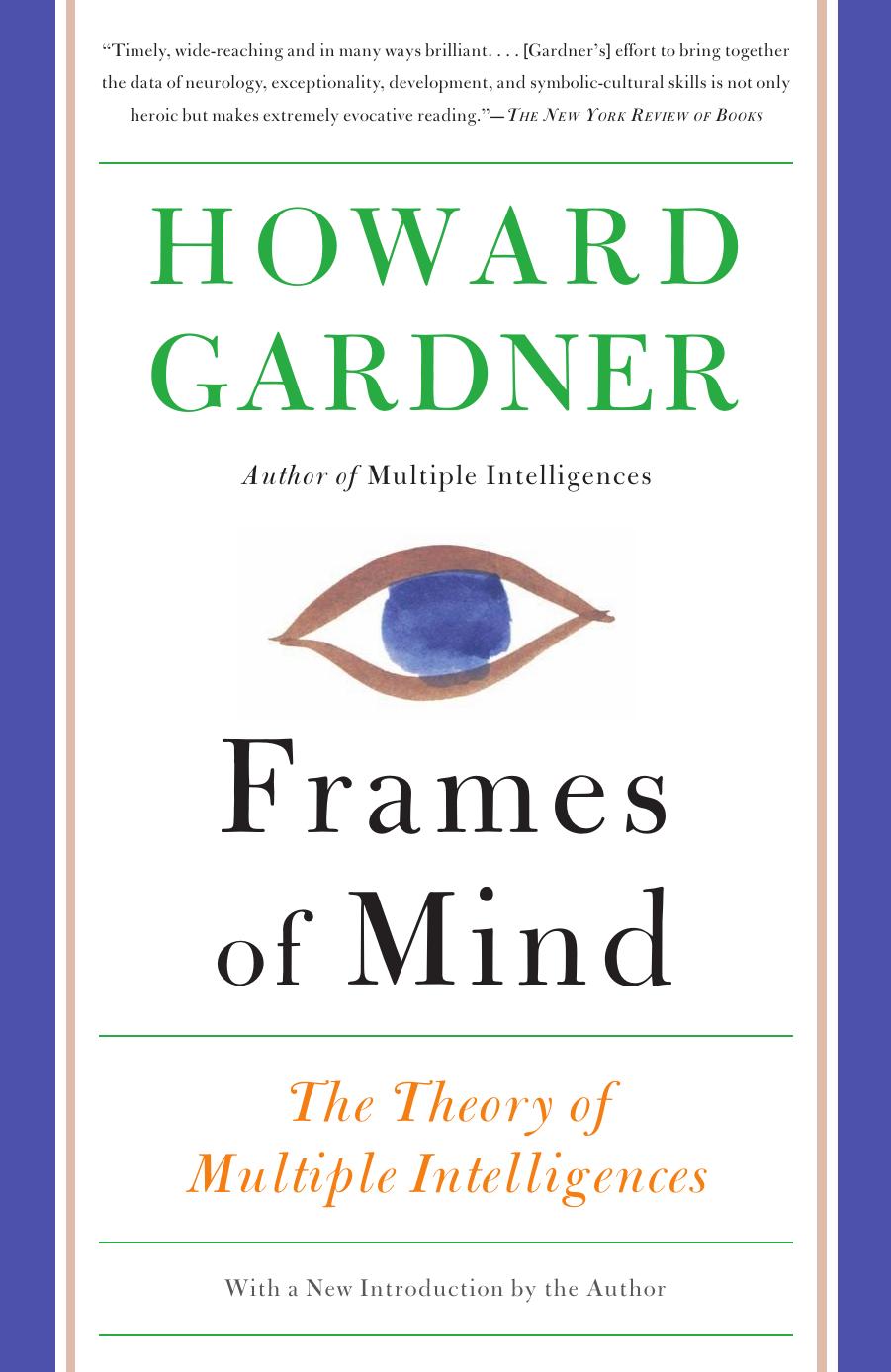Frames of Mind: The Theory of Multiple Intelligences by Howard Gardner

Author:Howard Gardner
Language: eng
Format: mobi, epub, pdf
Tags: Psychology, Multiple intelligences, Cognitive Psychology, Philosophy & Social Aspects, General, Education, Intellect, Educational Psychology
ISBN: 9780465025107
Publisher: Basic Books
Published: 1993-03-15T10:00:00+00:00
The Development of Bodily Intelligence in the Individual
The prehistoric origins of bodily intelligence, and its relation to language and other cognitive functions, may forever be wrapped in uncertainty; but the development of these skills in the human beings of today is a subject on which scientific progress can be made. Though Piaget did not himself view his work in relation to bodily intelligence (he was interested in “headier” issues!), his description of the unfolding of sensori-motor intelligence, in fact, illuminates its initial evolution. One can see in Piaget’s description how individuals progress from the simplest reflexes—such as those involved in sucking and looking—to behavioral acts that fall increasingly under the control of environmental variation and individual intentions. One can see formerly isolated events yoked together—such as sucking and looking, or looking and reaching—in order to obtain familiar goals. One can see separate acts combined in novel ways in order to achieve fresh goals—earmarks of the height of object permanence. Finally, as the child begins to operate upon mental representations such as symbols, one can note the same sequence of acts and operations recapitulated in a less public arena. Tool use has now invaded the realm of “pure thought.”
A number of students of child development, among them Jerome Bruner and Kurt Fischer, have embraced the idea that the development of skills ought to be conceived of generally, not merely with reference to the bodily activities of infancy, but rather with respect to all manners of cognitive operations. These researchers construe the development of knowledge as a building up of more elaborated and increasingly flexible skills: smoothed-out acts themselves become the subcomponents or constituent acts of ever higher and more complex skills. Thus, for example, the child first combines reaching and looking into grasping; the grasping of single objects evolves into the passing of objects from one hand to the other; the use of sets of objects for daily tasks is transformed into the building of simple structures; such simple structures become combined into more elaborated displays; and so on. Scholars who pursue the idea of knowledge-as-skill recognize the increasing internalization of public action into private thought but insist that every new skill sequence must nonetheless pass through a parallel developmental sequence. In this way, they recall the approach of Frederic Bartlett, who brooked no sharp distinction between physical actions and thinking skills; and they align themselves with contemporary students of human performance, who focus on the development of skills like typing, chess playing, or computer programming, and see each as manifesting increasing mastery of, and smoother coordination among, various types and levels of skill.
There may well be significant continuities between the earliest circular reactions of the infant and the much more elaborated forms of activity that characterize the skilled juggler, typist, chess player, reader, or programmer. Yet the question must be raised whether the acquisition of symbolic competence may, in fact, affect the development of bodily skill in profound ways. When one can state a goal in words, convey instructions verbally,
Download
Frames of Mind: The Theory of Multiple Intelligences by Howard Gardner.epub
Frames of Mind: The Theory of Multiple Intelligences by Howard Gardner.pdf
This site does not store any files on its server. We only index and link to content provided by other sites. Please contact the content providers to delete copyright contents if any and email us, we'll remove relevant links or contents immediately.
| Administration | Assessment |
| Educational Psychology | Experimental Methods |
| History | Language Experience Approach |
| Philosophy & Social Aspects | Reform & Policy |
| Research |
The Art of Coaching Workbook by Elena Aguilar(50980)
Trainspotting by Irvine Welsh(21518)
Twilight of the Idols With the Antichrist and Ecce Homo by Friedrich Nietzsche(18501)
Fangirl by Rainbow Rowell(9095)
Periodization Training for Sports by Tudor Bompa(8168)
Change Your Questions, Change Your Life by Marilee Adams(7634)
This Is How You Lose Her by Junot Diaz(6791)
Asking the Right Questions: A Guide to Critical Thinking by M. Neil Browne & Stuart M. Keeley(5632)
Grit by Angela Duckworth(5515)
Red Sparrow by Jason Matthews(5390)
Paper Towns by Green John(5087)
Room 212 by Kate Stewart(5035)
Ken Follett - World without end by Ken Follett(4644)
Housekeeping by Marilynne Robinson(4339)
The Sports Rules Book by Human Kinetics(4290)
Double Down (Diary of a Wimpy Kid Book 11) by Jeff Kinney(4206)
Papillon (English) by Henri Charrière(4195)
The Motorcycle Diaries by Ernesto Che Guevara(4009)
Exercise Technique Manual for Resistance Training by National Strength & Conditioning Association(3955)
